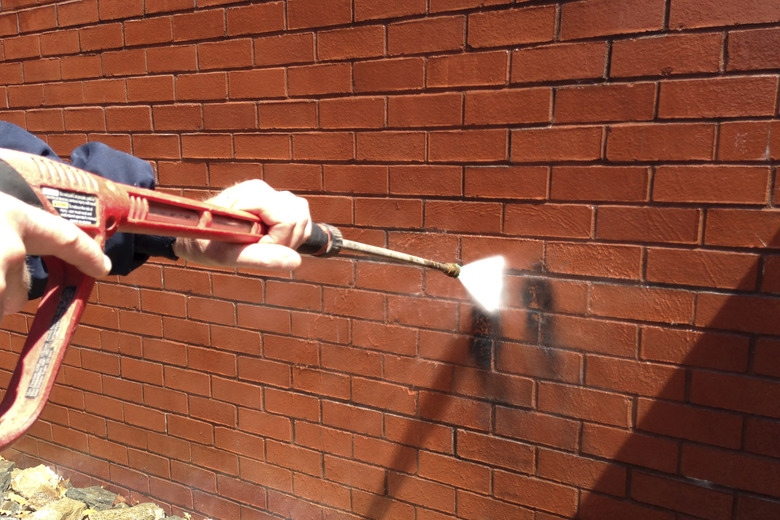How Do I Remove Mold From Brick Walls?
We may receive a commission on purchases made from links.
When it comes to removing mold from bricks, there is good news and bad news. The good news is that the actual bricks themselves probably aren't harboring the mold. Mold needs an organic food source, and brick simply doesn't provide it. It's more likely that the mold is growing on dirt and debris that have accumulated on the brick rather than digging into or damaging the bricks themselves.
The bad news is that bricks are porous, and you're just as likely to have dirt and dust in the tiny nooks and crannies as you are on the flat surface of the brick. Even though the mold stays on the surface, it will still take a little scrubbing to get into all these tiny pores.
What To Avoid
What To Avoid
When it comes to removing mold from bricks, knowing what not to do is just as important as knowing what to do. If at all possible, you should not use harsh chemicals like TSP, muriatic acid, or bleach to remove mold on bricks — especially outdoors. All of these chemicals are often recommended for removing mold and they do work. Unfortunately, they can also stain your brick, and the water runoff from cleaning the wall with these chemicals can kill plants or stain hardscape features.
It's also important to avoid scrubbing bricks with a wire brush. Metal bristles can come off the brush and get stuck on the brick. They then rust, causing an unsightly rust stain on your brick and creating a new problem.
You'll also want to skip the sponge. Many websites suggest cleaning brick with a sponge or sponge mop head. Those who recommend this cleaning method, however, have clearly never tried it. If you do, expect the sponge to continuously snag on the rough surface of the brick and prove impossibly difficult to work with.
Things Needed
-
White vinegar
-
Ladder (optional)
-
Garden hose or power washer
How to Remove Mold From Brick Walls
1. Get Ready and Gear Up
If you're going to clean the mold off your bricks, it's imperative that you find the source of the problem first. Mold doesn't just spontaneously appear. It needs water from somewhere. If you don't find and stop the water flow, the mold will just come back.
- Check the weather. You want your bricks to dry thoroughly after you clean them, so try to choose a time when there is no rain in the forecast for the next two days. A cloudy day with a temperature of about 50 degrees Fahrenheit is perfect for cleaning brick.
- Find and fix the water source, if necessary. Search the area around the mold for a water source, which can be anything from a broken water line in the wall to a leaking gutter.
- Put on your safety gear, including gloves, a mask, and a pair of safety goggles. Clear others from your work area.
2. Scrub the Brick
When everyone is safe, you can begin to clean the mold from your bricks. You may need a ladder to reach some of it. If so, make sure you grab a buddy. You should never climb a ladder when you're alone. Make sure your spotter is also wearing safety gear for protection from the mold.
- Pour undiluted vinegar into a large spray bottle.
- Spray the bricks thoroughly with vinegar and allow it to sit for about five minutes.
- Scrub the bricks with a stiff brush, but avoid metal brushes.
- Rinse the bricks with water from your garden hose or a power washer. If you opt for a power washer, use a pressure no greater than 3,000 psi.
3. Kill the Mold You Can't See
Mold spores are far too tiny to see with the naked eye. Even if your bricks look completely mold-free after cleaning, it is very likely that some mold spores remain. Killing them will prevent the mold from popping right back.
- Spray the bricks thoroughly with vinegar for a second time.
- Leave the vinegar to air-dry. Do not rinse it away. Leaving the vinegar lets it penetrate the brick and kill any mold you may have missed.
